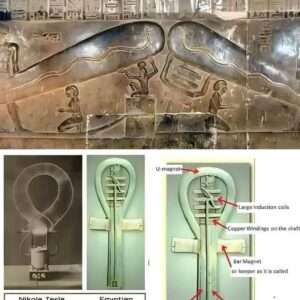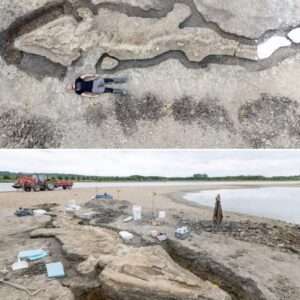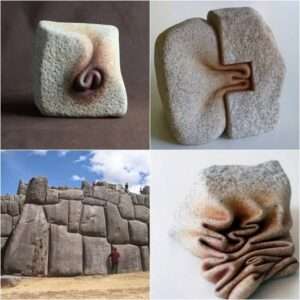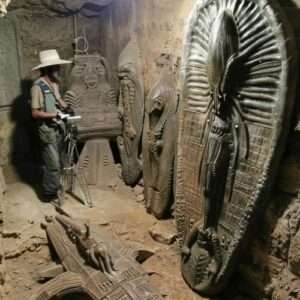Mount Nemrut in Adiyaman, Turkey, stands as a testament to the grandeur and ambition of the Hellenistic period. At the summit of this majestic mountain, the mausoleum of Antiochus I, who reigned over the kingdom of Commagene from 69-34 BC, continues to awe visitors with its historical significance and architectural prowess.
Antiochus I’s kingdom of Commagene was established north of Syria and the Euphrates River after the fragmentation of Alexander the Great’s empire. Despite its relatively short existence, Commagene left behind a lasting legacy in the form of Mount Nemrut and its imposing mausoleum.

The mausoleum itself is a marvel of ancient engineering, with massive statues and reliefs depicting Antiochus I alongside various deities and celestial symbols. This fusion of Greek, Persian, and Armenian influences reflects the diverse cultural heritage of Commagene and the broader Hellenistic world.
Visitors to Mount Nemrut can witness the sunrise or sunset from the summit, casting a mesmerizing glow on the ancient ruins and sculptures. The experience is both humbling and awe-inspiring, offering a glimpse into the distant past and the grand ambitions of Antiochus I.
In addition to the mausoleum, Mount Nemrut is also home to a series of tumulus mounds, believed to contain the tombs of lesser nobles and officials from the Commagene kingdom. These burial sites further highlight the historical and archaeological significance of the region.
Today, Mount Nemrut remains a popular destination for tourists and history enthusiasts, drawing visitors from around the world to explore its ancient wonders. The site has been recognized as a UNESCO World Heritage Site, preserving its cultural importance for future generations to appreciate.
In conclusion, Mount Nemrut and the mausoleum of Antiochus I serve as a poignant reminder of the splendor and ambition of the Hellenistic era. By venturing to this remote mountaintop, visitors can immerse themselves in the rich history and cultural tapestry of ancient Commagene, gaining a deeper appreciation for the legacy left behind by Antiochus I and his kingdom.





